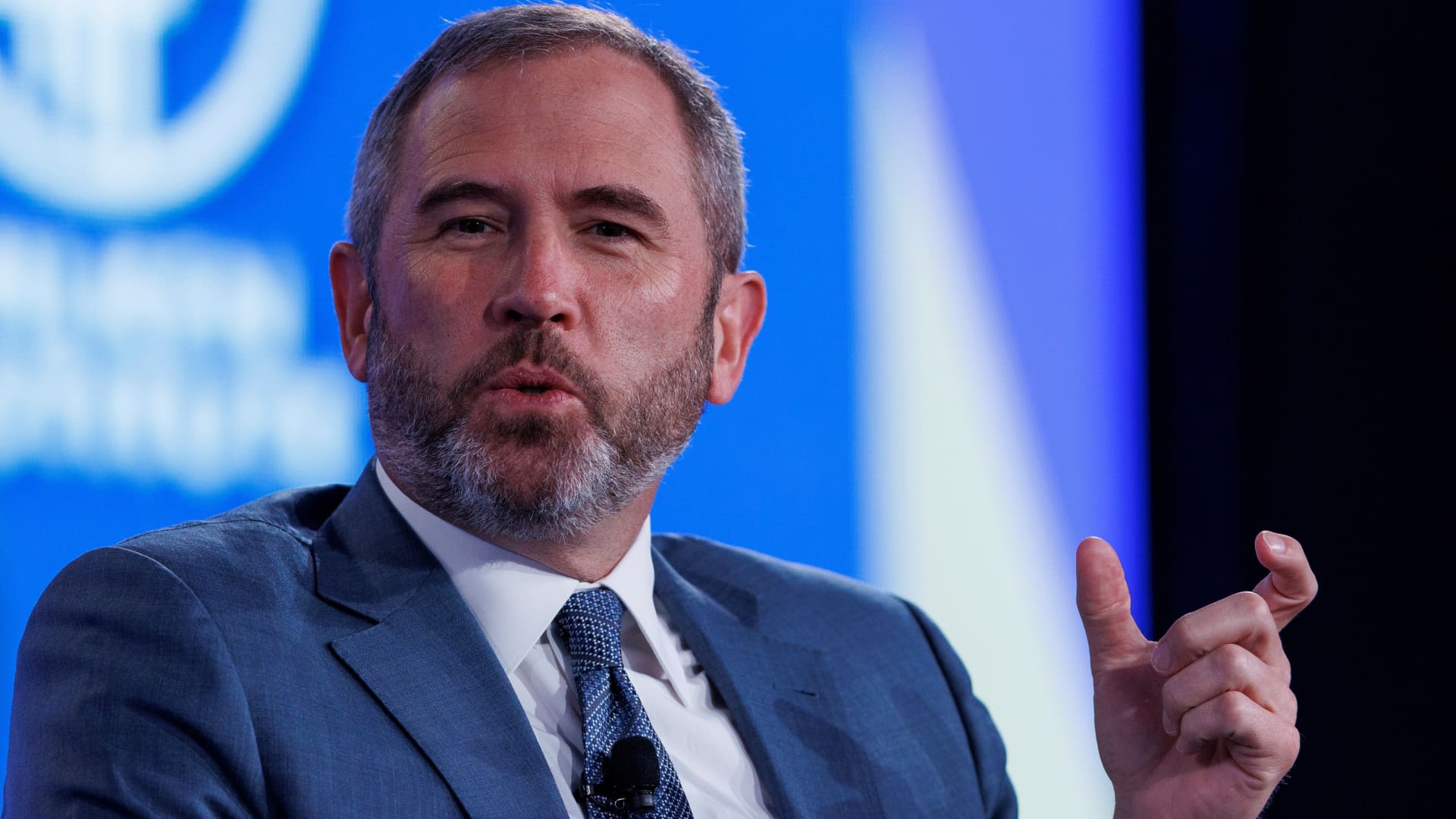The investing information provided on this page is for educational purposes only. NerdWallet does not offer advisory or brokerage services, nor does it recommend or advise investors to buy or sell particular stocks, securities or other investments.
Welcome to NerdWallet’s Smart Money podcast, where we answer your real-world money questions.
This week’s episode is all about investing in 2023.
Check out this episode on any of these platforms:
Our take
Investors likely had a wild ride in 2022, depending on how much they let the swings of the stock market get to them. And that’s one takeaway from last year: Don’t let the day-to-day ups and downs worry you too much. Acting from a place of fear can lead to decisions you’ll regret later. And trying to time the market is not a sound investing strategy.
Many financial advisors will say that as long as you are making regular contributions to your accounts through the highs and lows — a strategy called “dollar-cost averaging” — you are on track to build wealth over the long run. And if the stock market continues its erratic streak in 2023, consider not looking at your retirement accounts too often to avoid feeling anxious.
If you’re new to investing and want to get started this year, start by knowing your goals and what accounts can help you meet them. For many newcomers, that means setting up a retirement account. Workplace accounts, like a 401(k), are an accessible option for many. So are individual retirement accounts, both Roth and traditional.
Our tips
-
There’s nothing wrong with being boring: A simple, well-diversified portfolio has more reliable gains than an investment strategy where you try to time the market.
-
Think about the long term: Markets go up and down, so focus on your time horizon to avoid getting caught up in the swings of the day. Time horizon just means how long before you’ll need to use the money invested.
-
Take one step at a time: If you’re new to investing, explore your options — including retirement accounts, brokerage accounts or robo-advisor accounts — to know which can help you meet your investing goals.
More about investing on NerdWallet:
Episode transcript
Liz Weston: Welcome to the NerdWallet Smart Money podcast, where you send us your money questions and we answer them with the help of our genius Nerds. I’m Liz Weston.
Sean Pyles: And I’m Sean Pyles. To contact the Nerds, call or text us on the Nerd hotline at 901-730-6373. That’s 901-730-NERD, or email us at [email protected].
Liz Weston: Follow us wherever you get your podcast to get new episodes in your feed every Monday. And if you like what you hear, please leave us a review and tell a friend. This episode, we’re continuing our series all about how you can set up your money in 2023 to meet your goals and enjoy a life well spent.
Sean Pyles: And this time around, we are talking with investing Nerd Sam Taube about investing in 2023, including how to invest when the economy is shaky, what lessons we can learn from 2022 and how you can find the best investment tools for your goals. Welcome to Smart Money, Sam.
Sam Taube: Thanks for having me. Happy to be here.
Sean Pyles: The last 12 months have been pretty rough for investors. I’m wondering what your lessons are and what you’re taking away from 2022.
Sam Taube: I’ve had a couple of interrelated lessons that I’ve taken away from 2022. The first one is to diversify and not put all of your eggs in one basket. And the second is to be aware of recency bias, which is the very natural human tendency to assume the trends from the recent past are going to continue indefinitely.
As an example, big tech stocks were some of the biggest winners in the stock market in the 2010s. And also, in the first few years of the 2020s, they rose much faster than the indexes like the S&P 500. But they were some of the biggest losers in 2022. Alphabet, which I own a few shares of, was down about a third at one point. Amazon, at one point this year, was down almost half. And Meta, at one point this year, was down about two-thirds. Crypto is another example. We had this incredible bull market from 2020 to late 2021. Bitcoin and Ethereum doubled in value several times over during that time, but as of this recording, they’re both down more than two-thirds.
Liz Weston: Now, I have a very reliable indicator for when a market has hit its peak. It’s that when I start to think, “Hey, maybe I should invest in that,” then things go to heck in a handbasket.
Sam Taube: Of course. You’ll hear from many financial advisors that, when it comes to investment selection, diversification is key, boring is really good. And there’s been a gambling behavior that has paid very well over the last few years of making these big bets on trendy investments that are going “to the moon,” as the kids say. And last year has been a lesson in why that’s not such a good idea.
Sean Pyles: We saw some people make a good amount of money from the meme stocks like AMC, but we also saw a lot of people lose money that they put into that because when there is a big bubble, there are going to be winners, but there are going to be more losers than winners when it comes to something like that.
Sean Pyles: Well, with the caveat that we are not financial or investment advisors, and will not tell you what to do with your money, Sam, I’d like to hear how you personally are approaching investing in 2023.
Sam Taube: Personally, I am approaching investing in 2023 the exact same way I did in 2022 when it comes to what I’m buying and how I’m buying it. It can be tempting to try and time the market and to try to change your strategy based on the latest ups and downs and try to buy at the bottom and sell at the top. But they’ve done studies on this. The investment bank Brown Brothers Harriman did a study on market timers and found that the vast majority of them end up losing money as a result of this.
Delia Fernandez, who is a certified financial planner, who we’ve consulted for a number of articles, told me to remember that we’re in it for the long term. She recommends dollar-cost averaging, which is an approach where you make small, frequent contributions to your investment account, whether that’s an IRA, or a 401(k) or a brokerage account. The idea is to invest steadily over time and not necessarily worry about when you’re getting in and when you’re getting out.
Sean Pyles: Dollar-cost averaging is one of those terms that can seem very confusing and jargony to those who are newer to investing. But I think folks should realize that, if they have regular contributions to a 401(k) or an IRA already set up, they are dollar-cost averaging already, so congratulations.
Sam Taube: Yep. It’s a default.
Liz Weston: They’re buying more shares when the prices are down and fewer shares when the prices go up. That’s basically dollar-cost averaging.
Sam, it’s widely expected that we’re going to enter a recession this year. How is investing in a recession different from investing in less scary times?
Sam Taube: Well, before I answer that question, I want to gently push back and qualify that statement. There certainly is a strong possibility of it. And on the one hand, surveys have shown that a majority of economists think we’ll have a recession, and we do have some recessionary signals in the economy, like a big drop in the stock market, rising interest rates, rising unemployment. But it’s important to remember that, for one thing, economists don’t have the best track record when making these kinds of predictions. And second, there are some signs that we could avoid a recession. The Fed is talking about slowing down the increase in interest rates because it looks like inflation may be cooling off. The economy itself is still expanding as measured by GDP, and there’s a possibility that stocks could have already hit their bottom and started to rebound.
Now, having said all those qualifiers, for a lot of people, the best move in a recession — if we have one — is actually just to keep doing what they’ve been doing before. As I was saying earlier, market timing just isn’t a smart move. It might feel counterintuitive to put more money into stocks when they’re falling, but it means you’re getting a better price for those stocks than when they’re going up. If you do want to try to take advantage of a potential recession, a relatively safe thing you can do is try to look at sectors of the market that tend to be relatively recession-resistant, like health care or consumer staples.
Health care in particular has been studied for its relative recession resistance. There was a 2021 paper published by the National Bureau of Economic Research, which showed that health care hiring stays really steady during recessions because, even when times are tough, people still need medicine.
Sean Pyles: That seems like a really rational way to approach investing when we are maybe in a recession, but nonetheless in a scary time in the economy. But we know that a lot of people, a lot of our decisions that we make are not rational. So I think it can be helpful to approach things in a reasonable way instead of trying to be entirely rational. How do you think people can find the best of both worlds? They can maybe have a focus on investing and not get too scared when the stock market or the economy seems like it’s a little wobbly.
Sam Taube: I think that that’s one of the perks of having an automated set-it-and-forget-it approach, like dollar-cost averaging, is that it means that you don’t have to look at the scary negative numbers as much and you can just stay the course without doing anything. I would say that, although there are sectors that outperform during a recession, like health care, if you’re going that route, you are probably going to be spending more time worrying about your portfolio’s one-day returns.
So I would say that if you have a weak stomach for seeing those negative numbers, which certainly can be very scary, a more automated set-it-and-forget-it approach might be right for you.
Sean Pyles: Yeah. There’s also nothing wrong with not looking at your retirement account for weeks on end. I’ll say maybe you check in on it quarterly or a few times a year, but you don’t need to be monitoring it every single day because the ups and the downs of the stock market can feel a lot more significant and nerve-wracking when you’re following it every day.
Liz Weston: And people often think that they can somehow avoid the worst of the market and still jump back in time to catch the upswing. And the fact is that’s really, really hard. Sometimes the market moves really fast.
Sam Taube: Yep. And we can only really identify the top and the bottom in retrospect.
Sean Pyles: I think people can lose sight of the bigger picture when it comes to investing, which is the fact that they are likely not retiring for many years. And when they look back maybe a decade, two decades, three decades from now, they will probably have forgotten the anxiety they felt in this moment, but they will be glad that they stayed invested if that’s what they decided to do.
Liz Weston: Yeah. And even if they are retiring pretty soon, they’re probably going to live a few decades, so they still need the inflation-beating power that only stocks can offer. So they still need to have a big chunk of their portfolio invested.
Sean Pyles: It’s not like the day you retire, you pull all of your money out of the stock market. Right?
Liz Weston: That is not a good idea.
Sean Pyles: Well, I want to provide some guidance for folks who might be newer to investing, maybe aren’t even sure how to get into the game, but want to start in 2023. Sam, what do you think is a good way to start investing?
Sam Taube: Yeah. Again, we should disclaim here that this is educational information and one should not interpret this as financial advice. But having said that, the first step, if you’re really new to investing, is obviously to open an account. If you’re investing for retirement, this could mean a 401(k) if your workplace offers it, or an IRA if they don’t. If you’re investing for a shorter-term goal like, I don’t know, buying a house or something, you might want to open a taxable brokerage account.
And then, the next step from there is to get yourself some low-cost mutual funds or exchange-traded funds, which can give you steady returns and help you control your risk. There are a few different ways you can go with that, depending on how hands-on you want to be. If you really want a set-it-and-forget-it option, and you’re using a retirement account, then you might want to look into a target date fund. That’s basically a diversified set of stock funds and bond funds that are packaged into one investment for you. And when you’re young, it starts out very stock-heavy. And then, as you age, it automatically adjusts itself to become more conservative and bond-heavy as you approach retirement. But of course, target date funds are generally only available in retirement accounts. If that’s not an option, you can also look at robo-advisors, which are the same principle. They’re a hands-off, automated, self-adjusting portfolio that invests your money in a bespoke set of ETFs for you.
And then, if you want to be a little more hands-on, you can buy some index funds yourself and adjust the proportions yourself over time. One of the most basic ways to do this is with the two-fund portfolio, which is just a world stock market ETF and a total bond market ETF. And you can get a little more complex if you want, with a three-fund portfolio, which could be an S&P 500 ETF, a total bond market ETF and an international non-U.S. stock ETF. There’s a whole bunch of these lazy portfolios, as they’re sometimes called, that you can find online.
Liz Weston: The reason we’re talking about ETFs is they tend to be even less expensive than index mutual funds, right?
Sam Taube: That’s correct. Very low expense ratios.
Liz Weston: And that matters a huge amount in making sure that you get as much out of your money as you possibly can, is controlling the fees.
Sam Taube: And one other caveat I want to add is, if you go the lazy portfolio route where you’re buying your own index funds, that does mean that you have to do the adjusting. So you have to remember to rebalance your funds every year or so. That means selling a little bit of the funds that have done well and buying a little more of the funds that haven’t done as well so that everything stays in its intended balance, which, again, is going to be very stock-heavy when you’re young and then more bond-heavy as you approach retirement.
Sean Pyles: One thing that I run into a lot when I talk with people who are newer to investing is that simply finding the right account can be really confusing. There are a number of different companies that offer different kinds of accounts, so I’m wondering how you think people should approach shopping around and finding the right accounts for their needs.
Sam Taube: Yeah. There are a few things that you want to consider there. One is what you want to invest in. Do you want access to just stocks and bonds and ETFs? Do you want mutual funds? Do you want cryptocurrency? Because not every brokerage necessarily offers all these, particularly when it comes to cryptocurrency.
Another thing is the account minimum. A lot of brokerages have cut this down to zero, but not all of them. So it’s worth reading the fine print to see if there’s a minimum amount that you need to invest. And another thing that’s similar that you want to look at are the maintenance fees and the trading commissions. Once again, these have dropped to zero among a lot of brokerages, but not all of them. So it’s good to just double-check the fees, the minimums, the terms and conditions. And NerdWallet has a set of roundups which compare different brokerages along all the metrics I’ve listed here — so, pretty easy to find this information with us.
Sean Pyles: Yeah, also, NerdWallet’s 2023 Best-Of Awards, a list of the best financial products curated by our Nerds, has just dropped. I highly recommend that folks check this out if they’re in the market for a new investment account or really any other financial product. We will link to that in our show notes post at nerdwallet.com/podcast.
Sam, another thing I want to get your thought on when it comes to shopping around is — maybe might seem a little bit more superficial — but it’s the interface of these apps, because sometimes getting into these apps and platforms can be a little bit intimidating. How do you think that comes into play when someone is shopping around? Should they weigh that more heavily than the fees they might pay that allows them to even get into an account and they’ll use it more? Or where do you think that fits in?
Sam Taube: It’s hard to say whether that’s more important than the fees because, at the end of the day, that’s your money, but it certainly is a consideration, and that’s another thing that we score brokers for in our reviews at NerdWallet. On the very user-friendly side, you’ve got apps like, say, Robinhood, that are really designed to be streamlined and simple and beginner-friendly, but they might have more limited capabilities than something like an Interactive Brokers or a Webull, which are both platforms that are designed for more seasoned day traders.
Sean Pyles: And those companies you mentioned are NerdWallet partners, correct?
Sam Taube: They are, yes.
Sean Pyles: And I mentioned that because it might seem silly to pay more in fees for an account just because it looks nicer on your phone, but that is how a lot of people approach shopping around for platforms that they want to use.
Sam Taube: Absolutely. I mean, if it is the difference between using it and not using it, that certainly might be worth paying a little more for.
Sean Pyles: Well, Sam, thank you so much for sharing your insights with us and our listeners.
Sam Taube: Thank you for having me on. It’s been great.
Sean Pyles: With that, let’s get on to our takeaway tips. Liz, will you please start us off?
Liz Weston: Yes. First and most importantly, there is nothing wrong with being boring. A simple, well-diversified portfolio has more reliable gains than an investment strategy where you try to time the market.
Sean Pyles: Next, think about the long term. Markets go up and down, so focus on your time horizon to avoid getting caught up in the swings of the day.
Liz Weston: Finally, take it one step at a time. If you’re new to investing, explore your options, including retirement accounts, brokerage accounts or robo-advisor accounts, to know which can help you meet your investing goals.
Sean Pyles: And that is all we have for this episode. If you want the Nerds to answer your money questions, call or text us on the Nerd hotline at 901-730-6373. That’s 901-730-NERD. You can also email us at [email protected] Visit nerdwallet.com/podcast for more info on this episode. And remember to follow, rate and review us wherever you’re getting this podcast.
This episode was produced by Liz Weston and myself. Kaely Monahan edited our audio. And a big thank you to all the folks on the NerdWallet copy desk for their help.
Liz Weston: And here’s our brief disclaimer. We are not financial or investment advisors. This Nerdy info is provided for general educational and entertainment purposes and may not apply to your specific circumstances.
Sean Pyles: And with that said, until next time, turn to the Nerds.







































